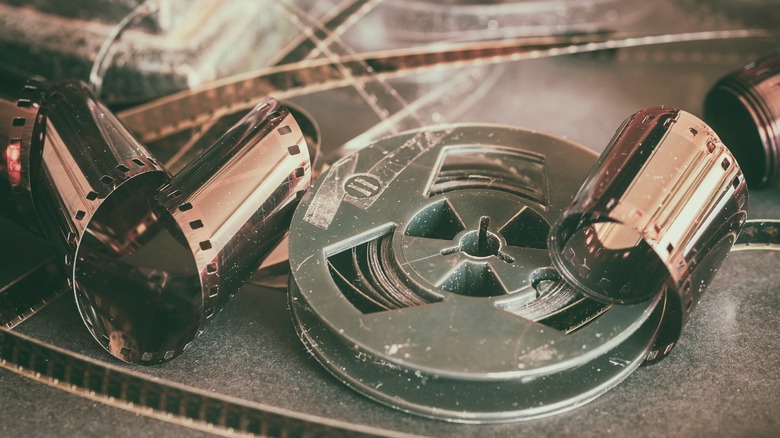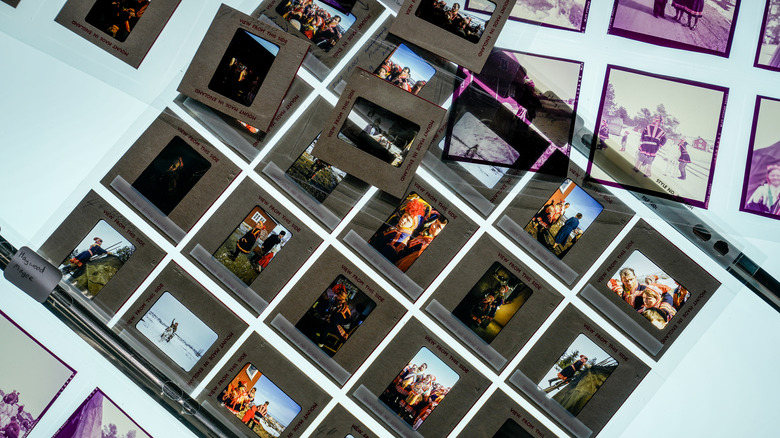Positive Vs. Negative Film: How To Decide Which Is Best For You
When one gets into photography, they might think it's as easy as pointing a camera at their subject, pressing a button, and that's it. When they start taking classes, though, they start to see it's a little more complicated than that. Terms like metering and ISO speed get thrown around, but when the type of film is brought up, the complexity and skill that goes into photography really starts to reveal itself. Positive, negative, slides, reversal, color positive, bland and white positive, all of these are different types of film a photographer has at their disposal. If they're not using one of the best digital cameras on the market, that is.
Whether color or black and white, the most common type of film photographers use is negative. Photo negatives are identified from the brightest parts of the image being the darkest on the film, and vice versa for the darkest parts. This ends up being reversed once the film is developed. Photographers like that color negative film offers a wide variety of ISO speeds and handles exposure levels exceptionally well.
Color positive film, on the other hand, produces an image just as it's seen in the viewfinder onto the film. Depending on who you ask, some photographers refer to it as reversal, transparency, and slide film because it's used to create slides for a projector. It has to be used with low ISO settings but will produce colorfully vivid pictures.
How to choose the best film for you
Both types of film have their strengths and weaknesses. Color positive film provides the benefit of seeing how the image will turn out once it's developed. That's not the case for negative film. The sharpness and resolution is also better with color positive film. What it really comes down to is the intended purpose for the photoshoot. If a photographer is planning on making slides, positive film is the only real option because they're easily printed onto projector slides. If you were to project negative film, it would show up on the wall or projector screen as a photo negative.
Negative film is ideal when a photographer wants to make prints, which is the most common use of film these days. There aren't too many slide projectors in use in contemporary society. Additionally, negative film lets photographers capture double exposure photos. Color positive film is tricky to use because the exposure settings need to be nailed down, whereas negative film is a little more lenient. To produce a sharp photo with positive film, the photographer needs to have a grasp on the fundamentals of light metering. If the exposure isn't perfect with negative film, it can usually be fixed when scanning or printing the photo. Old film cameras are making a major comeback, so make sure you know the type of film that best suits your needs.

